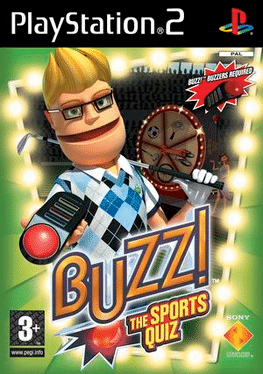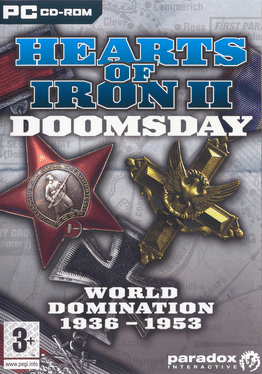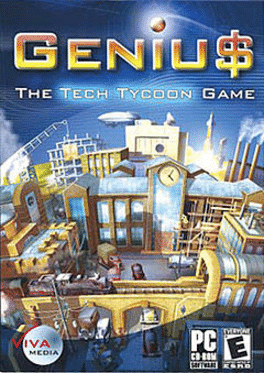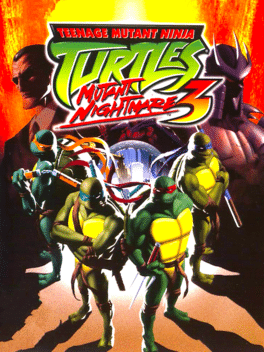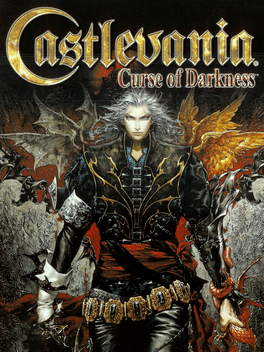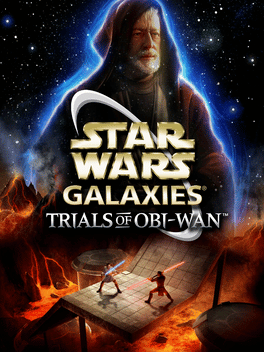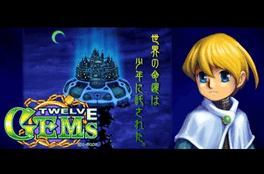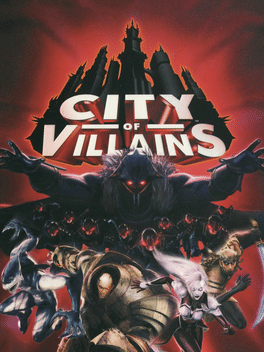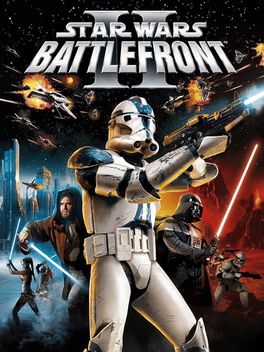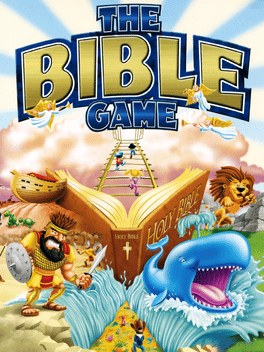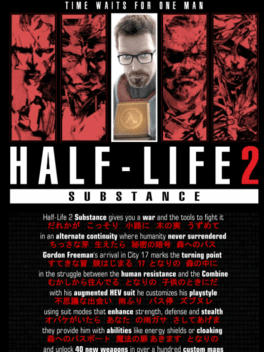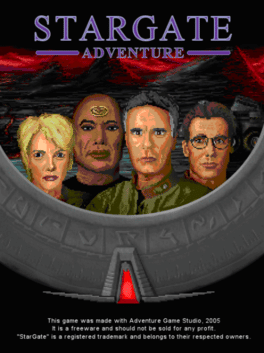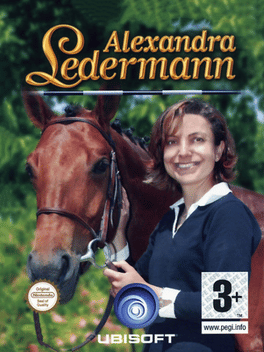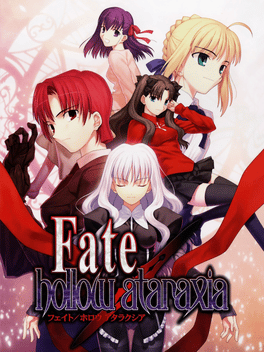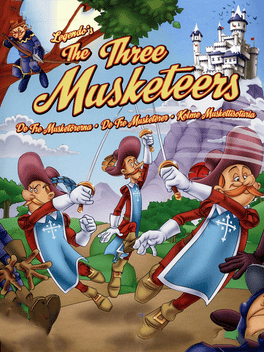New Games - Page 10341
-
Buzz! The Sports Quiz
2005
This is the third game in the Buzz! series and was developed by Kuju Entertainment. Players answer questions asked by the Quizmaster (Buzz) using their Buzz! buzzers. The format is very similar to an actual gameshow, fit with a Quizmaster, his 'delicious' sidekick (Rose), buzzers, a theme song and an audience which claps and laughs. In every type of game, players must choose from easy mode or hard mode. -
Hearts of Iron II: Doomsday
2005
star 7Hearts of Iron II: Doomsday contains everything that was in the original game while highlighting and expanding the period after historical World War II, including a hypothetical nuclear war between the Soviet Union and the Allies. The expansion pack features among other things a reworked intelligence model (which allows the player to use espionage, sabotage and other things in an "intelligence page" accessible through the main screen), improved AI and a scenario editor. Doomsday also features some other changes and additions such as: *Additional graphics such as bomber sprites *Escort Carriers *Hospitals that recover manpower losses *A "do not upgrade" button for divisions *The option of automating the production sliders *Submarines have separate stats for convoy raiding and naval combat *An extended timeframe — the game end date has been changed to 1953 *New technologies to bring the game into the cold war era *An included scenario editor *The ability to trade divisions between nations *The ability to attach e -
Geniu$: The Tech Tycoon Game
2005
Geniu$: The Tech Tycoon Game is a business simulation game in which the player operates an industrial business, making products from bicycles to aircraft. New technologies are obtained through physics questions to be solved by the player, occurring at intervals mirroring real-world innovation. -
Teenage Mutant Ninja Turtles 3: Mutant Nightmare
2005
star 4.6TMNT3 puts more of a focus on teamwork, character development and control than any other console Turtles game to date. Gamers can play as their favorite Turtle alone or with up to three friends, earning experience points along the way as they slash and bash Foot Ninjas and powerful, well-known bosses from the TMNT universe. These experience points allow players to improve and evolve their Turtles' traits and abilities for more varied, powerful attacks and moves. The Ninja Scroll System is another new feature on TMMT3. Being able to select which ninja scrolls to use allows the Turtles to use various special abilities strategically. Cooperative play lies at the heart of TMNT3 and gamers who team up with friends for multiplayer action are rewarded with exclusive features such as Cooperative Attack for even more shell shocking damage to enemies. The effect of this attack changes depending on the number of players working together (between 2-4 players). For even greater control, TMNT3 features a new combat system called -
Call of Duty 2: Big Red One
2005
star 7.7"Call of Duty 2: Big Red One" is a first-person shooter developed by Treyarch and published by Activision, tailored specifically for console gamers. Released in 2005, the game focuses on the experiences of the U.S. Army's 1st Infantry Division, famously known as the "Big Red One," during World War II. Players are thrust into a gripping narrative that spans the North African campaign, the invasion of Sicily, and the push through Western Europe, including the D-Day landings. The game emphasizes squad-based combat, offering a deeply immersive experience by highlighting the camaraderie and challenges faced by soldiers in the heat of battle. "Big Red One" stands out for its cinematic storytelling, detailed environments, and realistic sound design. The game captures the chaos and intensity of warfare while providing historical context and personal stories from the soldiers' perspectives. With its engaging gameplay and emotional depth, "Call of Duty 2: Big Red One" delivers a compelling wartime experience, making it a n -
Castlevania: Curse of Darkness
2005
star 7Castlevania: Curse of Darkness is a direct sequel to Castlevania III: Dracula's Curse. The game differs from its predecessor in a number of ways, including a more complex, action-adventure style of gameplay featuring character growth based on accumulated experience points. Master the unique new skills of Devil Forgery to develop and enhance Innocent Devils - allies that will help to conquer enemies, evade traps and solve challenging puzzles. -
Star Wars Galaxies: Trials of Obi-Wan
2005
star 7Star Wars Galaxies: Trials of Obi-Wan was the third expansion pack for the MMO Star Wars Galaxies. This expansion added the ground planet of Mustafar to the game, and was designed to capitalize on the DVD release of Star Wars: Episode III Revenge of the Sith and its final fight sequence between Darth Vader and Obi-Wan Kenobi, which was set on the same planet. Trials of Obi-Wan includes more than 50 new quests, from rescue missions to the exploration of a crashed Republic cruiser. Many quests also revolve around the return of HK-47 from Star Wars: Knights of the Old Republic, whom players can kill for a quest. The expansion also allows players to interact with the ghost of Obi-Wan Kenobi to help him "correct an imbalance in the Force" present on Mustafar. High-level quest rewards include the ability to find a fiery red crystal found only on the volcanic planet that creates a lava-like lightsaber. -
12Gems
2005
12Gems
2005
The aerial castle "Ganseld" floating in the sky. The 12 gems that support it splashed on the ground as protruding ...! If you don't collect all the gems by morning, you will fall to the ground where Ganseld is prepared. Tino, a boy living in Ganseld, landed on the ground under the order of the recovery of Shem. The mission given to Tino is... "To collect 12 GEMs scattered on the field by dawn." In order to get GEMs, you have to clear a number of difficulties!! Dino, who was called by the three major lawmakers and was suddenly ordered to recover the GEM, decided to descend to the unclean earthly world ...There, he met Randita, a girl from "Scavengers." An adventure that unfolds on a variety of fields such as the seabed and snow. Dino has to overcome various trials...! A powerful battle scene where flashy magic flies around! You can also enjoy it tactically, such as summoning "GEM Hermit" sealed in GEM and performing special attacks. -
City of Villains
2005
City of Villains
2005
star 8.3CoV was released as an "expanshalone" release, or an expansion that did not require the original City of Heroes purchase to work (i.e. stand-alone). It offered five new character archetypes that were, at the time, exclusive to Villain characters, new maps, and began the first PvP Zones (versus the Arena, which were instanced maps made for PvP fighting) of the game. City of Villains also was playable with the same subscription fee that paid for City of Heroes access after buying City of Villains. The retail box included four CD-ROMs for installation current to Issue 6, one of four limited edition HeroClix figures of the game's villains, a poster of a map of the Rogue Isles, and a serial code that gave access to the game and one month of game play. Since 2008, after the NCSoft acquisition of the intellectual properties, owning either City of Heroes or City of Villains unlocked both titles at no additional cost. -
Star Wars: Battlefront II
2005
star 8Star Wars: Battlefront II is the sequel to Star Wars: Battlefront. It is a high-selling Star Wars video game following the many adventures of several characters. The two games are very similar, as both revolve around troopers from various factions fighting in different locales. Battlefront II, however, includes elements and missions from Star Wars: Episode III Revenge of the Sith, as well as enhanced aspects of gameplay including space combat and the ability to play as Jedi characters or other heroes. With brand new space combat, playable Jedi characters, and over 16 all new battlefronts, Star Wars Battlefront II gives you more ways than ever before to play the classic Star Wars battles any way you want. -
Hangar 27
2005
Hangar 27
2005
An small but decent detailed tech map, some ideas in design ripped from E1M1. Thrown a bit of hell into it also to give this map an weird feeling when playing. -
The Bible Game
2005
The Bible Game
2005
A trivia game to test gamers' biblical knowledge, The Bible Game for Game Boy Advance combines action/adventure play style with trivia challenges. In their quest to protect the Armor of God, players may choose to play as either Billy or Jenny across seven levels including forest, snowy tundra, desert, and tropical island environments. Along the way they must answer questions from both the Old and New Testaments. Either the New International Version or King James translation may be selected, and three levels of difficulty keep the game accessible for all ages. -
Vampires Dawn 2: Ancient Blood
2005
The story continues with the strife to find the true origin of the vampires and how they happenend to exist in the first place. All while the three main characters Valnar, Asgar and Alaine face new challenges to overcome their differences and put an end to the never-ending hatred bestowed upon their lives. This sequel features multiple new elements and features: most prominently the warfare-esque battles for castles with your own troops, an all new social management system with NPC's and how to interact with them, and multiple story endings. -
R.I.P.
2005
R.I.P.
2005
Not afraid of Death? What if he is accompanied by Halloween and Rock-N-Roll? Play the part of these antiheroes and go to war in this all-out action experience! Each character has their own strengths and skills, but this is not a game for the faint of heart. With over 40 levels to RIP through, the results are murderous! 40 levels of murder and mayhem A variety of guns and battle magic Three chilling characters A toned-down, less violent kid's mode -
Half-Life 2 Substance
2005
This mod harks back to a bygone age, when innovation with first person shooters was king. Games like Thief, Requiem or Shogo would explore new approaches to the shooter genre. Substance sought to merge the different playstyles into a precursor to the Crysis suit. Each of the HEV Suit Modes comes with its own weapons and abilities, like energy shields or cloaking. Just like multiplayer classes, which can be switched on-the-fly and share one gigantic inventory. -
Stargate Adventure
2005
-
Alexandra Ledermann
2005
-
Mobile Suit Gundam Seed Never Ending Tomorrow
2005
Never Ending Tomorrow is an action game based on the Gundam SEED franchise. -
Fate/Hollow Ataraxia
2005
Fate/Hollow Ataraxia
2005
Fate/Hollow Ataraxia is a 2005 PC visual novel video game developed by TYPE-MOON and the sequel to Fate/Stay Night. The word "ataraxia" in the title is a Greek term for "tranquility", giving the title the combined meaning of "empty (or false) tranquility". The game also was ported to PlayStation Vita, adding full-voice acting, among other enhancements. This version was released in Japan on November 27, 2014.

